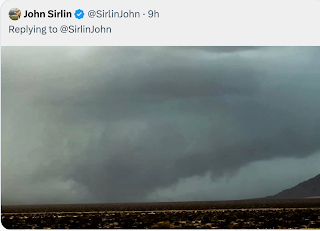Greensburg: PECAN = Nighttime Thunderstorm Research Project
In 2007, the town of Greensburg, Kansas, was destroyed by an F-5 tornado. Greensburg has made a remarkable recovery to become the "Greenest City in the USA." It is the world's leading community in LEED-certified buildings per capita.
To this day, the people of Greensburg rave about the help they received from all across the nation and the world.
 |
| Greensburg's 5-4-7 Art Center, Photo: NY Times |
NASA is in the process of leasing land in the Greensburg business park to set up an array of weather instruments to measure nighttime thunderstorms. It is one of six sites in Kansas and Oklahoma where data will be collected. Because meteorologists cannot do anything without an acronym, the project is called PECAN = Plains Elevated Convection at Night.
The unique geography of the Great Plains induces a low level jet stream (about 3,500-4000 ft. above the ground) to blow from south to north at night with speeds sometimes increasing to more than 50 mph even when the ground-level winds are nearly calm. Those southerly winds bring heat and moisture from the Gulf of Mexico that cause thunderstorms -- sometimes with large hail and damaging winds -- to develop in the middle of the night. Forecasting these storms can be a challenge to say the least.
True story: I once had a conversation with one of our newer meteorologists who wanted to forecast clear skies across southern Kansas overnight. I explained that we were likely to have thunderstorms. Dumbfounded, he pointed to the computer model projections that backed him up. I explained the computer models often handled this type of situation poorly and that my experience, rather than objective science, indicated thunderstorms would occur. That is what we forecast. By 4am, hail and windstorms raging across Kansas. I didn't blame the meteorologist: These storms are very difficult to forecast consistently well.
This experiment includes a research King Air, multiple mobile Doppler radars, weather balloons, and a host of other instruments. Greensburg will be front and center.
The hope is the data collected in Greensburg and at the other sites will soon lead to better forecasts of damaging storms and better forecasts of the amount of rain caused by these storms which will be a godsend for agricultural interests.
From the meteorological community and your fellow citizens, Thanks, Greensburg!!






Comments
Post a Comment